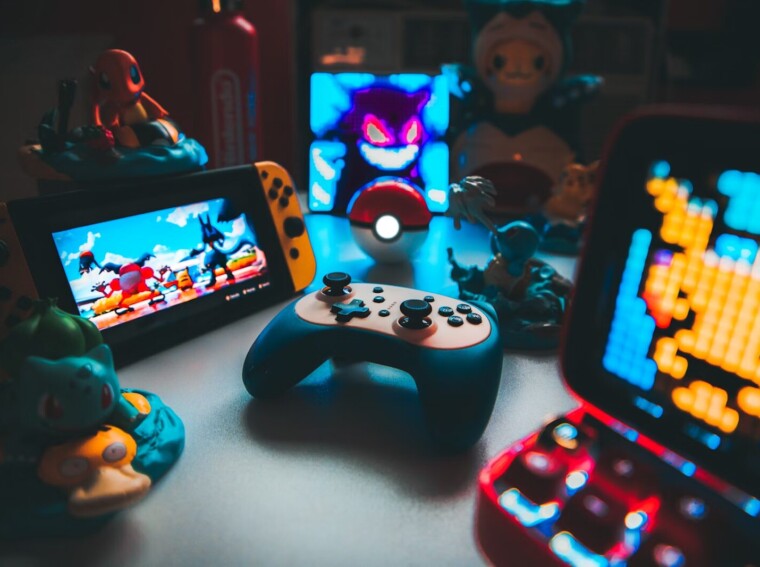For decades, the gaming world has revolved around console generations. Each new PlayStation, Xbox, or Nintendo release brought a leap in visuals, performance, and excitement. Players would queue overnight, trade old systems for new ones, and celebrate each launch like a landmark moment. But that rhythm, the idea of waiting years for a new box under the TV, is starting to feel out of sync with how people actually play. Mobile hardware, cloud access, and cross-platform design are rapidly changing what “next-gen” means. The question now isn’t when the next console will arrive, but whether the concept still makes sense at all.
The Console Cycle That Built an Era
For years, consoles set the pace of progress: better graphics, bigger worlds, and the thrill of peeling the plastic off a brand-new system. That pattern is changing quickly as players start valuing flexibility as much as performance. Titles like Call of Duty: Mobile and Genshin Impact prove that console-level experiences can thrive on handheld screens, blending smooth visuals with the same sense of progression and achievement that once defined home systems. They have shown that power alone no longer determines what feels “next-gen.” It is about access.
The shift isn’t limited to big-budget releases or competitive titles either; it’s showing up across every corner of gaming where flexibility and instant access matter most. UK players using regulated mobile betting platforms reflect that same evolution from fixed to fluid play. Many choose these UK-licensed sites because they offer reliable security and familiar interfaces that work just as easily on phones as they do on desktops. What keeps them coming back is how smoothly mobile play fits into daily life, turning short breaks into quick, rewarding sessions without being tied to one device.
That same mindset drives the rise of cloud services like Xbox Cloud Gaming, where players can stream console titles to a phone or tablet and pick up right where they left off. These examples show why the meaning of “console generation” is less about hardware cycles now and more about how gaming follows us from one screen to another.
From Generations to Updates
The traditional console cycle depended on clear technological jumps, faster processors, new storage systems, and higher resolution. Each leap created a reset moment for the industry. Today, that divide is narrowing. The PlayStation 5 and Xbox Series X still lead on performance, but their mid-cycle refreshes and constant software updates blur the lines between old and new. In practice, consoles are evolving more like smartphones, upgraded through patches and improved features rather than complete overhauls.
This shift mirrors how mobile devices have redefined the upgrade habit. Most players do not swap phones for power anymore; they upgrade for usability, design, or integration with new apps. The same mindset is creeping into gaming. When every platform offers cloud saves, shared progression, and cross-play, the gap between console and mobile feels more like a choice of screen than a choice of system.
The Power of Accessibility
The shift in accessibility shows up across every genre, even in sports titles. A recent feature on The Perfect American Football Games to Play on Mobile This Season shows how modern devices now handle visually rich, competitive gameplay that once required a console.
Mobile gaming’s biggest strength is not raw performance; it is reach. Phones and tablets bring games to places where consoles never could: trains, lunch breaks, and waiting rooms. That accessibility has turned gaming from a planned activity into something spontaneous. Developers have noticed this shift. Franchises like Apex Legends, League of Legends, and Fortnite all have mobile versions built for the same competitive intensity as their console counterparts.

Meanwhile, improved mobile chipsets such as Apple’s A17 Pro or Qualcomm’s Snapdragon Elite are closing the technical gap faster than most predicted. Players now expect console-quality visuals on mobile, and many get them. The result is an industry no longer bound to one format. When the same title can run across PC, console, and mobile with shared progress, the generation gap becomes more about convenience than capability.
Cloud and Cross-Play: The True Next Gen
If mobile devices broke the walls of accessibility, cloud platforms are dissolving them entirely. Services such as GeForce Now, Amazon Luna, and Xbox Cloud Gaming make console experiences possible without owning the hardware. They deliver AAA games through streaming, letting players jump from phone to PC to TV with the same account and progress intact.
This model reshapes how games are built and sold. Publishers can focus on universal compatibility instead of optimizing for one console at a time. This is why cloud-based ecosystems feel more like living platforms than generations, constantly updated, always connected, and never stuck waiting for new hardware to launch.
For players, it means freedom. The same title can travel with them from home to commute to vacation without missing a frame or save file. That kind of continuity once felt impossible, and it is quietly redefining what “next-gen” really is.
